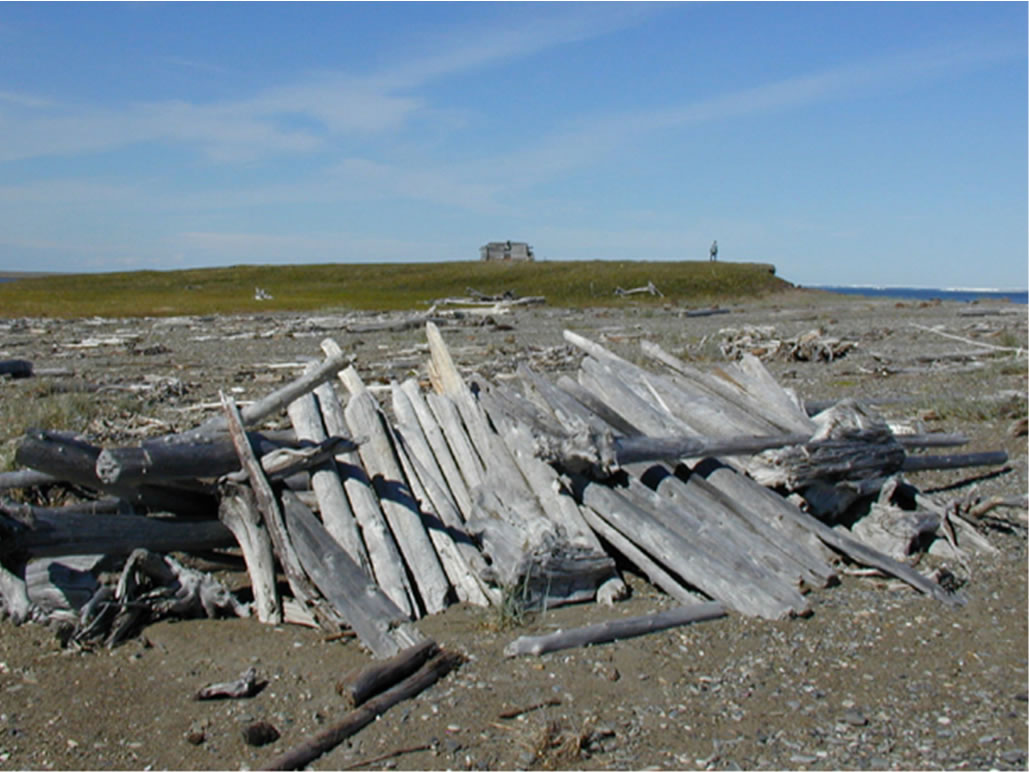
Herschel Island
(QIKIQTARUK), Yukon Territory 
Herschel Island, an important cultural heritage site, is being slowly washed away by rising sea levels that are attributed to global climate change. Located in the Beaufort Sea, which is part of the Arctic Ocean, Herschel Island lies 5 kilometres off the coast of the Yukon and is the northernmost point in the territory. It has a total area of 112 square kilometres. Herschel Island is the first territorial park created by the Yukon Government. In 1972, it was designated the site of a National Historic Event, and was recently included on Canada’s Tentative List for World Heritage Sites. The island contains many artefacts, including the oldest frame building in the Yukon and the original Pacific Steam Whaling Company house (built in 1893), along with several other historic buildings relating to the whaling industry and the North-West Mounted Police, who established a post there to assert Canadian sovereignty in 1903. Thanks to the dry, cold climate of Herschel Island—which preserves wood longer than the warmer, moister weather of the south—two of the old warehouses and many of the whalers' tiny cabins survive as well. The Anglican Church Mission, established in 1897, stands by itself to the north of the other buildings. There are also more than 100 graves of former residents, whalers and the Inuvialuit —who had lived on the island for hundreds of years before the American whalers arrived. The territorial government has had to move the old whaling house back from the shore twice to protect it from rising water, while the melting permafrost is lifting coffins and toppling gravestones. Rising sea levels, increased wood rot and fungal growth, melting permafrost and increased erosion—all effects of global climate change—are having an impact on cultural heritage resources, leaving places like Herschel Island at risk.
